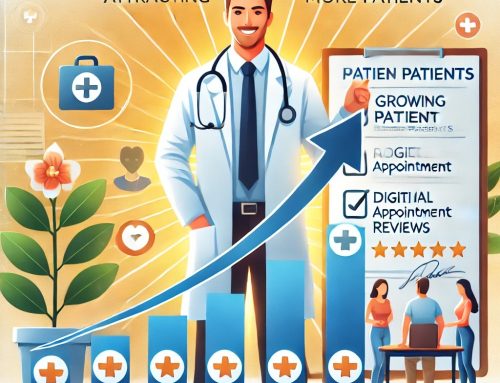Appearing in the U.S. News Report, an article written by Beth Howard asks, Are Virtual Care Clinics the Wave of the Future?

The article starts with James Hoevelmann, a patient suffering from COPD, who no longer needs to physically go to the emergency room or IcU now that he is armed with smart devices and has access to a virtual care center who receives his vital signs streamed in. Gavin Helton, the medical director of Mercy Virtual Care Center states:
“We can trend the data on a daily basis and intervene in many cases even before patients experience symptoms”
Participating in this telemedicine practice are doctors, nurses and therapists, providing care from far away. The 125,000- square-foot facility houses more than 300 medical professionals who sit in front of monitors and computer displays, watching over the care of patients at 38 hospitals in seven states. In addition to intensivists who observe patients and direct care at distant ICUs, neurologists provide guidance on stroke treatment to community hospitals. A team of virtual hospitalists orders and reads tests, and nurses field questions about everything from nosebleeds to sinus infections. Other clinicians, like Hoevelmann’s doctors, stay in near continuous touch with chronically ill patients at home – though these patients may venture to town occasionally for checkups at their doctor’s office nearby.
Mortality in the ICU “is trending 40 percent less than predicted,” says Randall Moore, Mercy Virtual’s president. “By virtually monitoring ICUs 24/7, we’re getting to problems earlier.” The result, he says, is that Mercy in the past year sent home 1,000 ICU patients who otherwise would have been expected to die and saved $40 million.
While no other institution is demonstrating the promise of this type of care on a similar scale, patients in a growing number of health systems are getting a taste of the virtual clinic experience. Many hospitals, including CHI Health, which runs 14 hospitals serving Nebraska, southwest Iowa and northern Kansas, and Virginia Mason in Seattle, have partnered with the telehealth company Carena to create what the firm calls 24/7 private-label virtual clinics.
Web portals carrying the health system’s brand connect patients to primary care doctors in the system or to one of the board-certified family practice doctors or nurse practitioners (“virtualists”) on Carena’s payroll, who work at a patientless clinic near Seattle. When patients access the portal, they request a visit and can expect to interact with a physician in 30 minutes or less, day or night.
“The next thing you know, you’re in a virtual exam room on the screen. The doctor is there and the visit starts,” says Carena President and CEO Ralph C. Derrickson. Treatment recommendations rely on evidence-based guidelines, and because care is provided within the health system, the results are integrated into the patient’s electronic health record. “It’s on demand, like streaming a movie,” says Frank Twiehaus, head of strategic business development for virtual care at CHI Health. “We are now bringing care to patients wherever they are.”
Thomas Jefferson University in Philadelphia has a similar arrangement with different companies, using only Jefferson physicians to deliver care. Besides primary care, the virtual clinic, called JeffConnect, allows consults in 18 different medical specialties from urology to psychiatry.
“People should be cared for in any way they want,” says Judd Hollander, associate dean for strategic health initiatives at Jefferson’s Sidney Kimmel Medical College and a professor in the department of emergency medicine. The virtual clinic enabled more than 3,000 doctor-patient interactions in the last year and now averages 20 to 30 a day. Jefferson is able to resolve the health problems for over 85 percent of the patients who connect; others are sent to their own doctors or to the ER.
Jefferson also offers “virtual rounds” to inpatients’ family members who can’t get to the hospital. Using an iPad equipped with video camera and telehealth software, patients and doctors connect from the hospital room to family members across town or the country.
A first-of-its-kind app being developed at the University of Southern California will add one more level of remoteness: Patients will meet with a lifelike avatar of their doctor. Using virtual reality technology and artificial intelligence, computer scientists at the university are working with Keck Medicine of USC to capture doctors’ faces and create avatars that can interact with people and guide them through complex medical decisions.
These “virtual doctors,” which will have the ability to recognize emotion and show empathy, will have the knowledge base to diagnose problems and provide information personalized to the patient: the best treatment path for someone diagnosed with prostate cancer, say, based on age, tumor characteristics, and levels of prostate specific antigen, or PSA. Eventually, sensors worn by the patient will also feed data back to the virtual (and actual) doctor to provide a fuller picture of the patient’s health.
The app will make it possible to access world-class medical expertise over a smartphone. And while it may sound like an impersonal way to serve patients, an avatar has advantages in that department, too. “Often people will disclose more to a virtual human than a doctor,” says Leslie Saxon, a professor of medicine at Keck and executive director of the USC Center for Body Computing. “They don’t feel judged.”
This system is fantastic for people that live remotely or otherwise would have no access to healthcare. Likewise, it is wonderful for people who cannot travel due to chronic illness or for caregivers.
The Kink in the Armor
Will this system be so convenient that people stop getting real examinations by their physicians?
When I first started training in medicine, my chief told me, no one gets discharged from the hospital without you finding at least one other problem than that for which the patient initially sought consultation. The crazy thing is that most people did have other problems that we found- problems that patients did not complain about or know that they had! A complete, comprehensive and thorough physical examination often found problems, some which were very serious or grave, needing further investigation or treatment.
Will the medical community lose access to their patients physically? Will they lose the ability to catch serious problems at an early stage or early in the disease process?
I hope not!
What are your views? Please share your thoughts about this in the comment box below.



